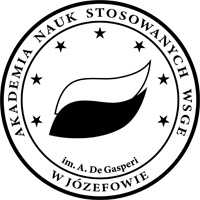Wydawnictwo
AWSGE
AWSGE

Akademia Nauk Stosowanych
WSGE
im. Alcide De Gasperi
WSGE
im. Alcide De Gasperi
BOOK CHAPTER (109-115)
The Situation of Albania's Environmental Reforms: The Conflict Between Human Rights and Legal Harmonisation
| 1 | University of Tirana |
KEYWORDS
ABSTRACT
With an emphasis on the intricate relationship between normative duties and national legal autonomy, this paper seeks to investigate how EU legal harmonisation has affected the limits of human rights protection. This study explores how harmonised legal frameworks affect the interpretation and application of human rights standards by looking at the European Union's approaches to legal approximation and transposition, both within its Member States and in relation to candidate or neighbouring countries.
With a focus on Albania's experience implementing the acquis communautaire, the paper draws attention to a persistent discrepancy between formal legal alignment and the substantive realisation of human rights standards. The analysis demonstrates how factors such as institutional capacity, political commitment, and prevailing legal culture contribute to this discrepancy, prompting critical reflection on the depth and authenticity of harmonization efforts.
REFERENCES (20)
1.
Bradford, A. (2020). The Brussels Effect: How the European Union Rules the World. Oxford University Press.
2.
Börzel, T. A., & Risse, T. (2009). The transformative power of Europe: The European Union and the diffusion of ideas. KFG Working Paper No. 1. https://www.polsoz.fu-berlin.d....
3.
Chalmers, D., Davies, G., & Monti, G. (2019). European Union Law: Text and Materials (4th ed.). Cambridge University Press.
4.
Craig, P., & de Búrca, G. (2020). EU Law: Text, Cases, and Materials (7th ed.). Oxford University Press.
5.
European Commission. (2022). Annual Report on Monitoring the Application of EU Law. https://commission.europa.eu.
8.
Damro, C. (2012). Market Power Europe. Journal of European Public Policy, 19(5), 682–699. https://doi.org/10.1080/135017....
9.
Dimitrova, A. (2010). The new member states of the EU in the aftermath of enlargement: Do new European rules remain empty shells? Journal of European Public Policy, 17(1), 137–148.
10.
Grabbe, H. (2003). Europeanization goes east: Power and uncertainty in the EU accession process. In K. Featherstone & C. Radaelli (Eds.), The Politics of Europeanization (pp. 303–327). Oxford University Press.
11.
Horsley, T. (2018). The Court of Justice of the European Union as an Institutional Actor: Judicial Lawmaking and its Limits. Cambridge University Press.
12.
Kelemen, R. D. (2011). Eurolegalism: The Transformation of Law and Regulation in the European Union. Harvard University Press.
13.
Lavenex, S. (2004). EU external governance in ‘wider Europe’. Journal of European Public Policy, 11(4), 680–700. https://doi.org/10.1080/135017....
14.
Manners, I. (2002). Normative Power Europe: A Contradiction in Terms? Journal of Common Market Studies, 40(2), 235–258. https://doi.org/10.1111/1468-5....
15.
Noutcheva, G. (2009). Fake, partial and imposed compliance: The limits of the EU’s normative power in the Western Balkans. Journal of European Public Policy, 16(7), 1065–1084.
16.
Olldashi, E. (2013). The phenomenon of translatability in the Europeanization of the law. Academicus International Scientific Journal, 8, 143–153.
17.
Olldashi, E. (2018). Codification and legal sources in the Albanian legal system: Comparative approach to legal systems. Academicus International Scientific Journal, 18, 96–113.
18.
Sedelmeier, U. (2008). After conditionality: Post-accession compliance with EU law in East Central Europe. Journal of European Public Policy, 15(6), 806–825.
19.
Sedelmeier, U. (2014). Anchoring democracy from above? The European Union and democratic backsliding in Hungary and Romania after accession. Journal of Common Market Studies, 52(1), 105–121. https://doi.org/10.1111/jcms.1....
20.
Weatherill, S. (2021). Law and Values in the European Union. Oxford University Press.
We process personal data collected when visiting the website. The function of obtaining information about users and their behavior is carried out by voluntarily entered information in forms and saving cookies in end devices. Data, including cookies, are used to provide services, improve the user experience and to analyze the traffic in accordance with the Privacy policy. Data are also collected and processed by Google Analytics tool (more).
You can change cookies settings in your browser. Restricted use of cookies in the browser configuration may affect some functionalities of the website.
You can change cookies settings in your browser. Restricted use of cookies in the browser configuration may affect some functionalities of the website.





